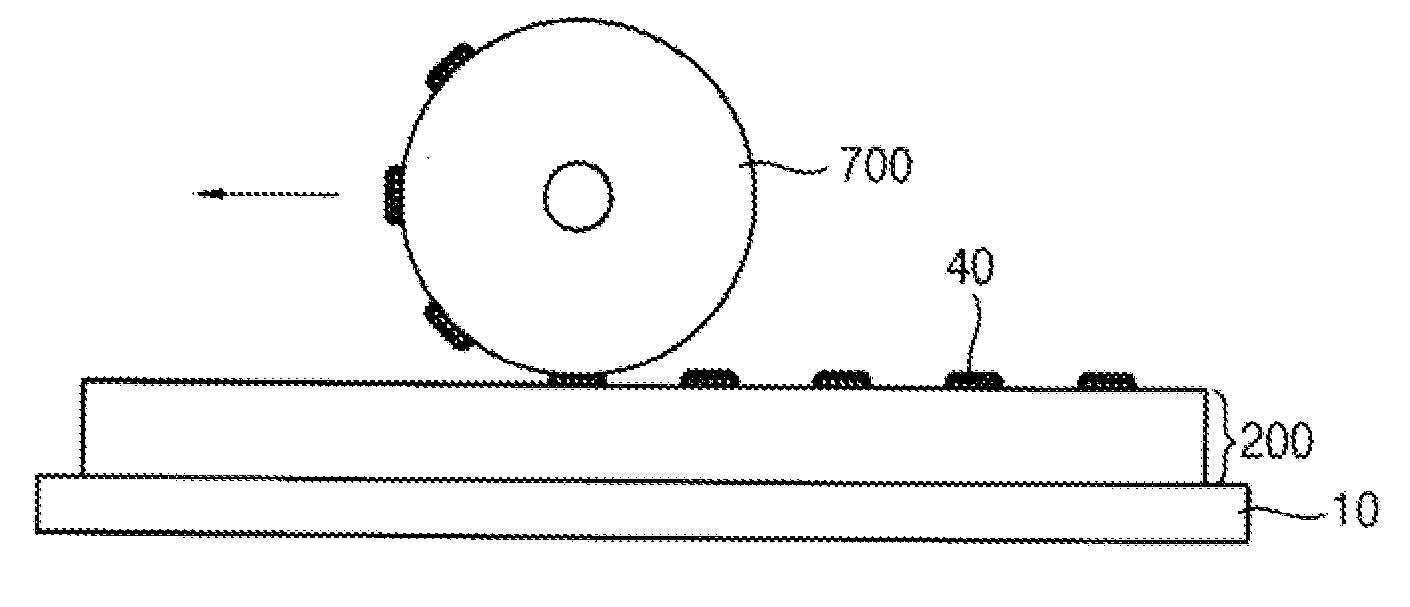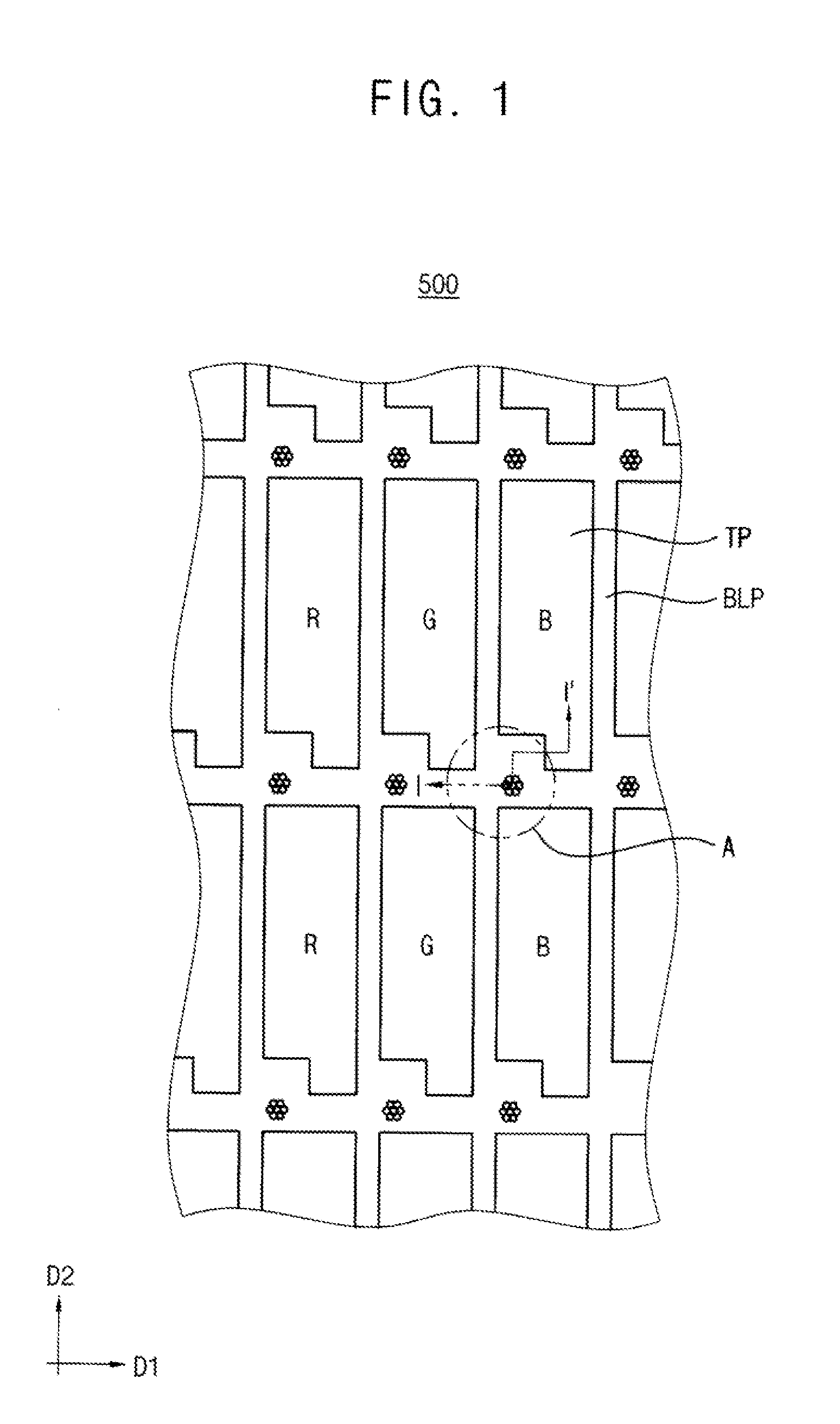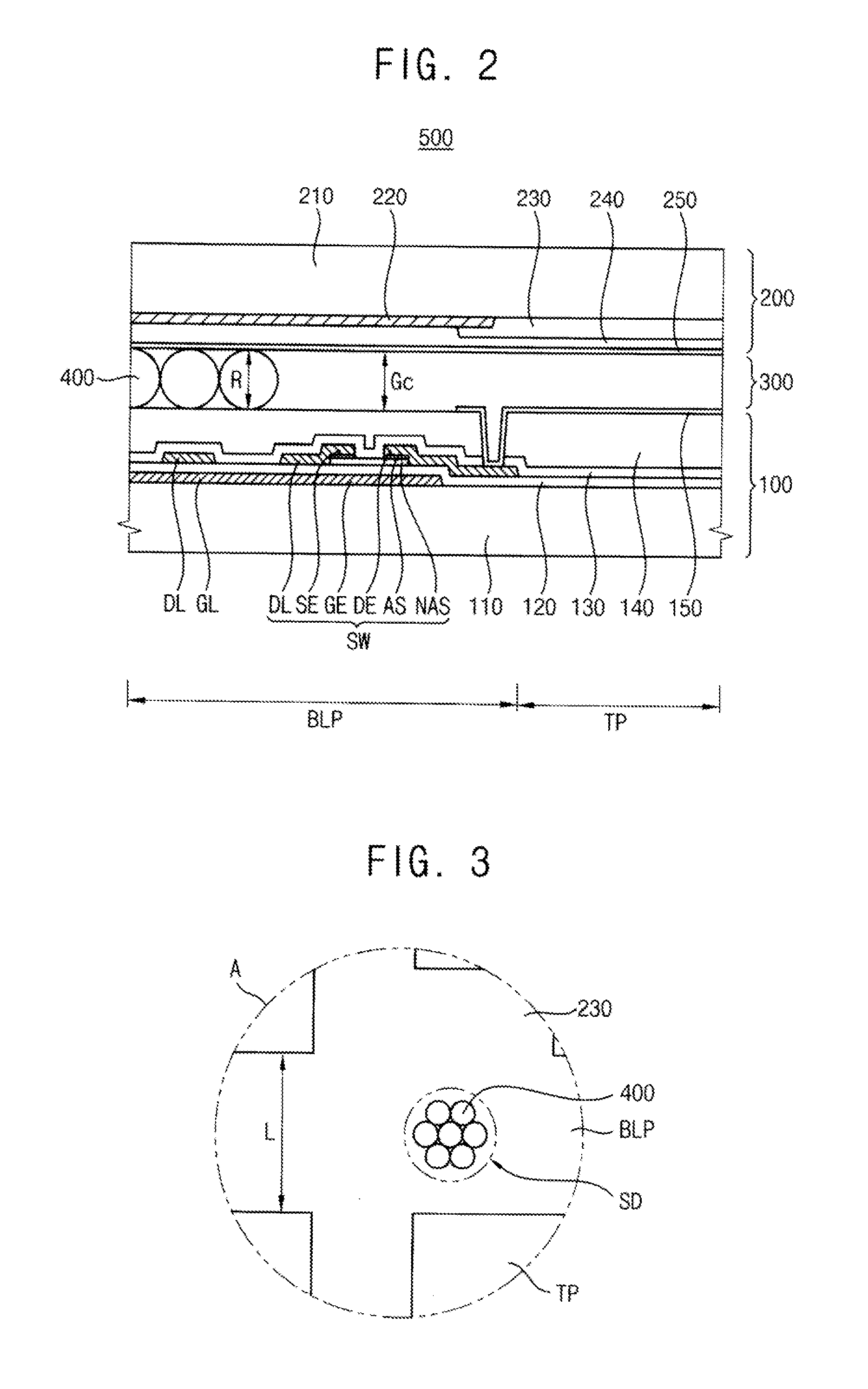Printing apparatus for manufacturing a spacer and method of manufacturing a display panel
a printing apparatus and spacer technology, applied in the manufacture of electrode systems, electric discharge tubes/lamps, instruments, etc., can solve the problems of reducing display quality and non-uniform coating of spacers on the substrate, so as to improve display quality, enhance press characteristics, and prevent smear defects when the display panel is pressed
- Summary
- Abstract
- Description
- Claims
- Application Information
AI Technical Summary
Benefits of technology
Problems solved by technology
Method used
Image
Examples
experiment 1
[0075]Five printing plates were made, each of which has elliptical receiving recesses with a depth of about 2.7 μm, where the recesses of each plate have a short axis length / long axis length of 10.5 μm / 15.75 μm, 13.5 μm / 20.25 μm, 16.5 μm / 24.75 μm, 19.5 μm / 29.25 μm and 22.5 μm / 33.75 μm, respectively. After ball-shaped beads with a diameter of about 3.35 μm were infiltrated into one receiving recess, an average number of beads actually infiltrated into this receiving recess was measured. The measured result is presented in FIG. 15 as Experiment 1.
experiment 2
[0076]Five printing plates substantially identical to those of Experiment 1 were prepared. After ball-shaped beads with a diameter of about 3.4 μm were infiltrated into one receiving recess, and an average number of beads actually infiltrated into this receiving recess was measured. The measured result is presented in FIG. 15 as Experiment 2.
experiment 3
[0084]Five printing plates were prepared, each having plural elliptical receiving recesses. The recesses of each plate have a depth of about 2.7 μm, and a short axis length / long axis length of 10.5 μm / 15.75 μm, 13.5 μm / 20.25 μm, 16.5 μm / 24.75 μm, 19.5 μm / 29.25 μm and 22.5 μm / 33.75 μm, respectively. After ball-shaped beads with a diameter of about 3.35 μm were infiltrated into one receiving recess, an average number of beads actually infiltrated into the receiving recess was measured. Then, the beads were transferred onto the printing roller by rolling the printing roller over the printing plate, and an average number of beads actually remaining on the printing plate was measured. A ratio of the number of beads remaining on the printing plate to the number of beads infiltrated on the printing plate will be defined as “bead number ratio.” The bead number ratio may be calculated in accordance with diameters of the receiving recesses, and then the result thereof is presented in FIG. 16....
PUM
| Property | Measurement | Unit |
|---|---|---|
| length | aaaaa | aaaaa |
| length | aaaaa | aaaaa |
| length | aaaaa | aaaaa |
Abstract
Description
Claims
Application Information
 Login to View More
Login to View More - R&D
- Intellectual Property
- Life Sciences
- Materials
- Tech Scout
- Unparalleled Data Quality
- Higher Quality Content
- 60% Fewer Hallucinations
Browse by: Latest US Patents, China's latest patents, Technical Efficacy Thesaurus, Application Domain, Technology Topic, Popular Technical Reports.
© 2025 PatSnap. All rights reserved.Legal|Privacy policy|Modern Slavery Act Transparency Statement|Sitemap|About US| Contact US: help@patsnap.com



